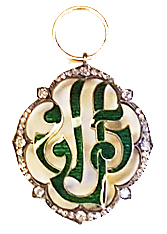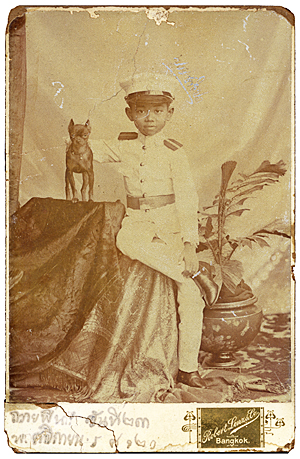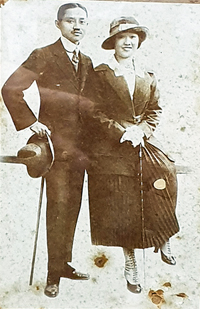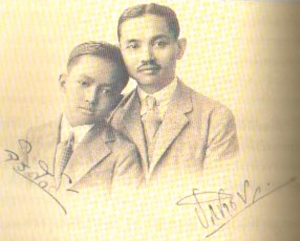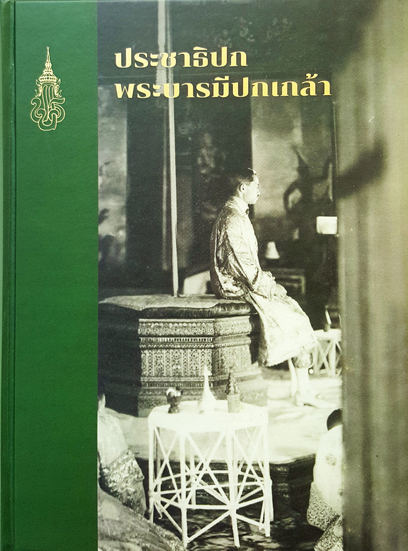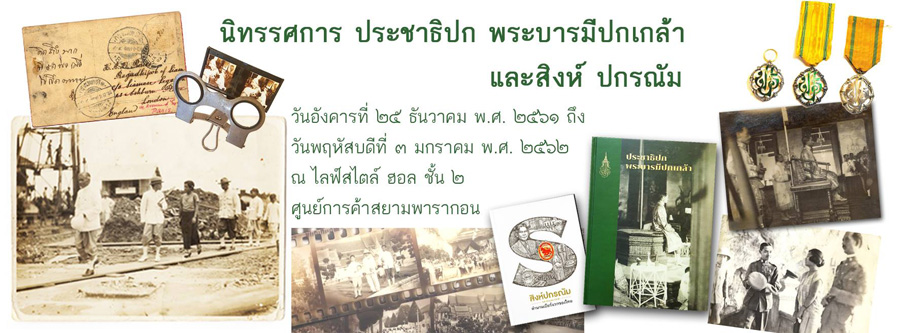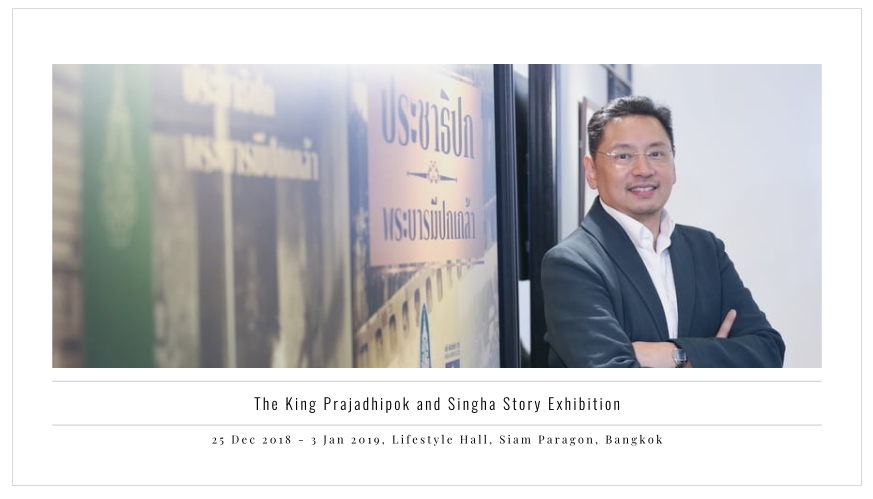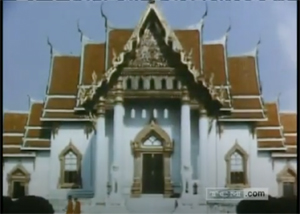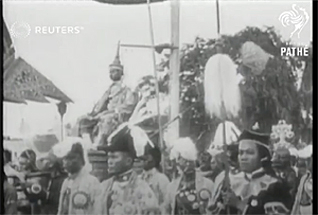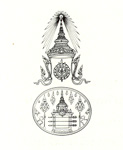 |
 |
|||||||||||||
1893-1941
Queen Rambai Barni 1904-1984
King Prajadhipok Medal
King Rama VII's Cypher Medal, (Ratanabhorn) 2nd Class
|
His Majesty King Rama VII was born His Royal Highness
Prince Prajadhipok Sakdidej, on 8 November 1893.
He was the 76th child of His Majesty King Chulalongkorn, and the 8th child
of Her Majesty Queen Sri Bajarindra.
He was later created Prince of Sukhothai by His Majesty King Chulalongkorn.
As Prince of Sukhothai, he was a member of the Privy Council to his elder brother, King Rama VI, and was heir presumptive after the death of Prince Asdang and Prince Chudadhuj. The prince became King Rama VII on 25 February 1926. His Majesty came to the throne during a period of change around the world. After the fall of the Austria-Hungary empire and the end of Imperial Russia, people around the world were looking for change, mostly though to an end of monarchic rule, and Siam was no exception. The King carried on studying the change to a Constitutional Monarchy started by his brother, King Rama VI, under the project "Dusit Thani," but he still believed that the Siamese people were not ready for such a change, especially in an abrupt manner, but rather a gradual one. But, with change sweeping around the world, a group of educated individuals, mostly with education from France and under the Royal Patronage, demanded this change. The King was pressured, and finally gave in and granted constitution to the people of Siam on 10 December 1932. He became the first constitutional King of Siam, and having witnessed the rise in power of the new so-called constitutional government, and their immediate act of corruption, the king finally abdicated in 1935. His Majesty spent his last years quietly with his wife, Her Majesty Queen Rambai Barni, in England. Although change had finally come to Siam in 1932, the Siamese people were lost without their king. They have lived for centuries under an absolute kingship, and with the new leader in the form of a Prime Minister, it was just difficult to adjust. With the new government, the Siamese culture became the old way, adopting the "new" Western way for forward-looking country. The old way was discarded, with persons caught practicing those "out-dated" customs severely punished. Men were to wear suits, and women dresses with hats and gloves. Thai musical instruments were also destroyed, prefering the Western ones, like the piano, violin, harp, etc. The people continually looked to the king for comfort, and as the father of the kingdom, the same as always, or more so, because they felt that they have lost their identity. King Rama VII supported Thai businesses during his reign, and one notable activity was the support of the building of the first brewery in Siam, producing a thoroughly Thai beer, Singha Beer. He was particularly fond of this new technology, and privately bough shares of the company, as well as lending some much needed funds to the project. The buying of compay shares was a new practice for him, and which he studied, and ultimately became a shareholder of many companies. These shares were confiscated by the new government during the power stuggle, and were not return to the Crown Property with other pieces of land or property, but the King's private shares were handed to the Ministry of Finance, which continues to own those "stolen" shares to this day. พระบาทสมเด็จพระปกเกล้าเจ้าอยู่หัว
Her Majesty Queen Rambai Barni The Queen was born Her Serene Highness Princess Rambai Barni Svasti on 20 December 1904, daughter of HRH Prince Svasti Sophon, the Prince (Kromma Pra) Svasti Vadhanavisit, a son of King Rama IV whose descendants use the surname "Svasti." As per the tradition of the day, she was sent to the palace, and was brought up by HM the Queen Regent Sri Bajarindra, mother of the future King Rama VII. The Royal Wedding between the then Prince of Sukhothai and Princess Rambai took place on 26 August 1918, with King Rama VI in attendance at the Sukhothai Palace, a wedding gift from the King to the newlyweds. It is said that this was the first official wedding for the Royal Family, as the King had passed the wedding law not long before, and there were no official weddings beforehand, but only a male royal taking a female as his consort and more as minor wives. After the wedding law was passed, the practice of "marriage" became that of a Western one. The King and Queen did not have any children, but adopted a cousin, Prince Chirasakdi Suprapat, youngest son of HRH Prince Bhanurangsri Savangwongse, himself the youngest son of King Rama IV, as his son, and gave the surname of Sakdidej Bhanubhand. His Majesty King Rama VII died on 30 May 1941 of a sudden heart attack, at Compton Place. He was 48 years old. It was the only Royal Funeral without the normal pomp and ceremony, but a quiet family one on 3 June 1941. The Queen stayed on in England, as it was during World War II, and communications with Thailand was not safe. Although, she was not a member of the Free Thai Movement (Seri Thai), a group known for its anti-Japanese stance, as Thailand became an ally with the Japanese, and voted against the Western world, she did help out with much needed funds. She finally returned to Thailand after the war, with the ashes of King Prajadhipok. Her home was confiscated by the government during the changes, and was wrongly set as the Ministry of Health. It took 3 years before she could get her home back, and stayed with the Princess Mother, Kings Ananda Mahidol and Bhumibol Adulyadej's mother, at the Sra Patum Palace. The Sukhothai Palace was returned to the Crown Property, and granted use to Queen Rambai until her death. Queen Rambai took many charities under her wing, as well as representing the Royal Family on many official events and activities. The Queen died on 22 May 1984. She was 79 years old. Her funeral was rightly that of a Queen of Siam should receive, so much different to the one for her husband. She was cremated on 9 April 1985 at Sanam Luang, the Royal Lawn in front of the Grand Palace. สมเด็จพระนางเจ้ารำไพพรรณี พระบรมราชินี With the link between King Prajadhipok and my family, I have been collecting anything and everything relating to the late king. With a small yet growing collection, I published a book to commemorate the 125th anniversary of His Majesty in 2018. As it was coincided with Boon Rawd Brewery's 85th anniverdsary, I thought it befitting to arrange a large exhibition to launch the book as well as to showcase the collection for the public to see, as well as to tell the story of how Thailand's first brewery began. It was held at Siam Paragon Shopping Complex for the very small period of only 10 days, from 25 December 2018 to 3 January 2019, with no entrance fee, and no fanfare. It was kind of Siam Paragon to provide the area free-of-charge.
|
Signed photograph of the then Prince Prajadhipok, dated 1901
King Prajadhipok and Queen Rambai Barni
The King and his adopted son, Prince Chirasak Suprapat
Signed photograph of Prince Chirasak Suprapat, given to King Prajadhipok before his trip to Java |
||||||||||||
The King Prajadhipok Remembrance Book which I produced in commemoration of the 125th Anniverary of His Majesty, as well as on the occasion of the 85th Anniversary of Boon Rawd Brewery, Thailand's first and largest brewery which His Majesty help found. |
The King Prajadhipok and Singha Story Exhibition, 2018
|
|||||||||||||
|
||||||||||||||
|
||||||||||||||
| BACK . SIAMESE COLLECTION | ||||||||||||||
| Updated 5 June 2021 | ||||||||||||||



